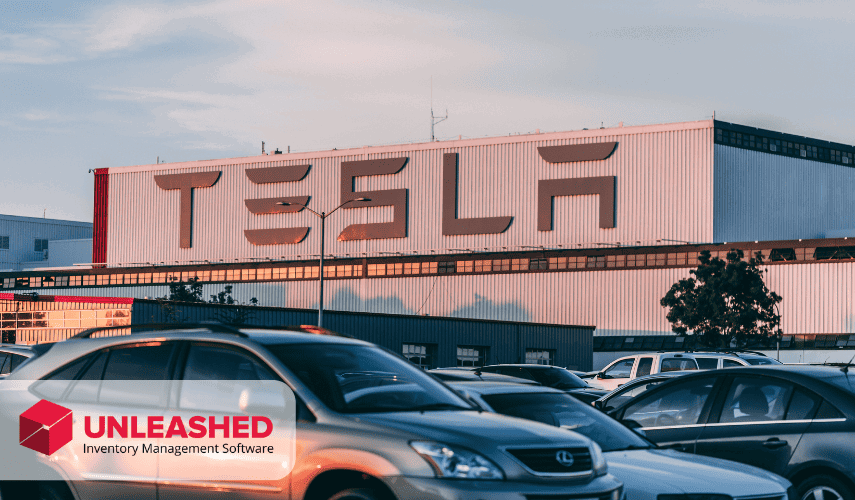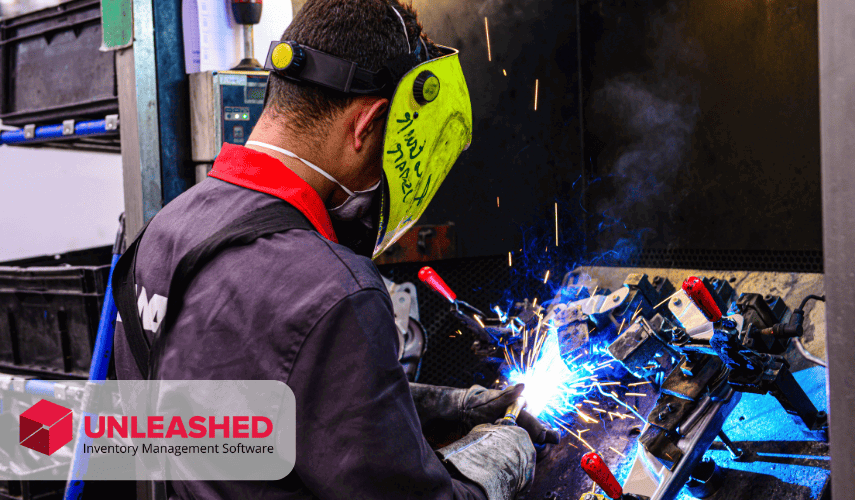
Machine learning is changing nearly every aspect of the supply chain and how we deliver goods to customers. Its impact is set to become increasingly more influential as the technology improves.
In this article, we explore the potential of machine learning in supply chain management and the different types and uses of the technology. We also break down several case studies of companies currently using machine learning in their supply chain processes.
What is machine learning?
Machine learning is a type of Artificial Intelligence (AI) which can use software, particular systems, or algorithms to analyse data without needing specific programming directions to do so.
 Machine learning can help supply chain managers boost productivity, efficiency and performance.
Machine learning can help supply chain managers boost productivity, efficiency and performance.
The 4 main types of machine learning include:
- Supervised learning
- Unsupervised learning
- Semi-supervised learning
- Reinforcement learning
The purpose of machine learning is to improve efficiency and performance while minimising opportunities for human error and unnecessary waste.
How is machine learning used in supply chain management?
Machine learning is used to optimise or automate many of the repeated processes in supply chain management. These include but are not limited to identifying stock fluctuations, forecasting trends and demands for products, and optimizing delivery processes.
According to an analysis by McKinsey, machine learning has the potential to “dramatically improve” supply chain performance for consumer-packaged goods. However, the report notes many companies are yet to fully adopt the technology or implement it as an end-to-end solution.
How does machine learning improve supply chain efficiency?
Machine learning can improve the supply chain in numerous ways, from tracking and predicting warehousing needs to delivery optimisation, and customer demand forecasting.
If you’re running a business that would benefit from improvements in supply chain management, it will be valuable to explore the benefits of integrating machine learning.
Let's break down six elements of supply chain management that can be improved by machine learning.
1. Forecasting
Machine learning algorithms can be used to analyse data including historical sales, customer trends, and seasonable change. Having accurate forecasts allows you to ensure you order raw materials and goods from your suppliers when needed.
2. Inventory management
Machine learning can track and analyse sales and customer data, along with supplier data. These datasets allow for accurate inventory management.
For example, if your customers buy large quantities of a certain product, machine learning software will be able to identify the surge in demand and feed the information back to the inventory management systems.
This helps reduce the chance of under or overstocking inventory which in turn can create significant financial risk.
3. Delivery optimisation
Machine learning software can analyse weather patterns, which means you can identify the best routes for the delivery of products to customers. You can also see if there will be delays or issues with the arrival of materials from your suppliers.
4. Quality control
Machine learning can analyse data from your production processes that identify issues with quality. This is often done with image recognition, allowing mitigation or reduction of the concerns.
5. Selection of supplier
Machine learning can help identify the best-performing supplier, drawing on performance data such as pricing, quality, and delivery reliability. This allows you to ensure you are working with the best suppliers for your business’s needs.
6. Protection against fraud
Machine learning can reduce the risk of fraud by identifying anomalies in data and flagging them for further inspection.
Machine learning can also be used to automate auditing and inspection processes.
 Many processes in the supply chain can be optimised with machine learning, including production and assembly tasks.
Many processes in the supply chain can be optimised with machine learning, including production and assembly tasks.
Types of machine learning used in supply chain management
The integration of machine learning into supply chain management processes is hugely helpful in terms of business efficiencies.
There are several different types of machine learning in the supply chain which serve different purposes. It’s important to understand which model may be best for your business needs.
The 5 types of machine learning in supply chain management include:
1. Supervised learning
This type of machine learning involves training a model to understand labelled or tagged data so it can make predictions or forecasts.
Modelling to understand the future demand for a product is an example of supervised machine learning in the supply chain.
2. Unsupervised learning
This type of machine learning involves the ability to analyse unlabelled or untagged data. The machine learning software should be able to recognise similarities in the datasets and group them into clusters to deliver useful insights.
This can be used, for example, when there is an unexpected upswing in demand for a certain product and you will need to respond by ordering more materials from your suppliers to meet the surge.
However, you will need to understand the unexpected shift and know how to respond.
3. Semi-supervised learning
As the name suggests, this is a ‘halfway house’ between the previous two types of machine learning. This type takes information from both labelled and unlabelled data to deliver insights and analysis into all elements of the supply chain process.
This is useful when labelled data is available, but may be too expensive to access, or there may not be enough to make informed decisions. The labelled data analysis can be buffered by adding an extra layer of insights.
4. Deep learning
This type of machine involves training a neural network - which replicates the human brain - on large amounts of data. This process can identify high-level features, trends and shifts that can inform business decisions.
5. Reinforcement learning
Another type of machine learning is called reinforcement learning, in which the machine learning software analysis data through a process of trial and error.
This can be used, for example, when trying to assess the best route for supply chain delivery.
 Supply chain automation is constantly evolving thanks to modern machine learning technologies.
Supply chain automation is constantly evolving thanks to modern machine learning technologies.
Machine learning in supply chain examples
Machine learning reduces waste and costs in the supply chain while improving efficiencies and outputs.
Below are four common ways it achieves these outcomes.
Demand forecasting
Machine learning can be used to analyse both historic and live data to deliver reliable insights into future sales.
Predicting future sales and trends is central to running a cost-effective and efficient business. Confidence in future sales volumes allows you to track back to the supply chain and order the right amount of goods and raw materials.
Warehouse management
Machine learning can be used to optimise inventory levels by identifying which products are selling faster than others.
In turn, this means stocking can be arranged so that the fastest-selling products, for example, are easily accessible in the warehouse.
The data can also be used to ensure orders are placed with the suppliers in good time, ensuring the production of goods keeps up with customer demand without lags or delays.
Supplier identification
Machine learning can be used to analyse the performance of various suppliers, considering data points such as quality, delivery and pricing. This means you can easily find and select the best supplier for your business.
Quality control
Machine learning is also extremely effective for quality control. It can be used to identify patterns and issues in production data that indicate a quality concern.
Doing this means allows you to mitigate or reduce the risks of defective products finding their way to a customer.
 Machine learning enables businesses to optimise their supply chain based on aggregated data and predicted trends.
Machine learning enables businesses to optimise their supply chain based on aggregated data and predicted trends.
Machine learning in supply chain management: Case studies
Companies around the world are leaning into the machine learning revolution, introducing machine learning technology in their daily workflows and future strategy planning.
We outline some examples of companies using machine learning below.
Machine learning at Fonterra
Fonterra is the behemoth of New Zealand’s dairy industry. It’s a cooperative owned by 9,000 farmers and is responsible for an extraordinary 30% of global dairy exports.
They use machine learning to optimise their milk production and delivery systems.
The data and insights gained from its machine learning mean farmers can make more informed decisions about their farms and businesses.
Fonterra’s deal with Dutch company Connecterra allows Fonterra farmers to access behavioural data on their cows using sensors and linked systems. The intelligence is then fed back to the farmer to support business decisions.
The information is refined over time through machine learning, meaning it becomes more personalised with each engagement.
Machine learning at Zespri
New Zealand’s Kiwifruit cooperative is investing tens of millions into its information systems and technology capability. The funds are being used to advance its use of machine learning, robotics, blockchain and other tools.
Machine learning is being used to optimise its supply chain, focusing on areas such as track and trace. The technology means Zespri is improving the quality of its products and cutting back on waste.
Machine learning at Amazon
Ecommerce mega outlet Amazon depends heavily on machine learning and AI to improve its supply chain management, delivery routes, customer experience, and demand forecasting.
It also offers its own artificial intelligence and machine learning tools through Amazon Web Services.
 Many manual tasks throughout the supply chain can achieve automation derived from machine learning.
Many manual tasks throughout the supply chain can achieve automation derived from machine learning.
Machine learning at Walmart
Walmart uses machine learning for numerous reasons, including shopper substitutions.
Walmart created a technology which identifies the ‘next best’ item shoppers want if the product they initially request is unavailable.
Machine learning does this by aggregating data across customer habits, inventory in stock, brand, price, and other details before making its selection. This is done in real-time, and the customer is asked to approve the choice before purchasing it.
This is faster, more efficient, and more accurate than relying on manual labour to do the same job.
Walmart also uses AI and machine learning to support its inventory management. It does this by training its algorithms to identify the different brands and read how much of a certain product is on the shelf.
When a product hits a certain stocking level, there is an automatic alert ensuring more is ordered.
Machine learning at Maersk Line
Maersk Line is also an active user of machine learning technology.
One example of this is its ‘Logistics Hub’ – a dashboard that enables its clients to have total visibility of their end-to-end supply chain.
The hub, powered by AI, offers an interactive dashboard which allows customers to access logistics updates, tasks, and progress of goods in real time. The AI technology tracks vessels, predicts estimated times of arrival, and offers accurate information on progress through individual ports.
Maersk Line also uses machine learning to optimise its assets using tools such as digital twins. This refers to the ability to create online ‘twins’ to physical demands, such as shipping routes.
Maersk is leveraging machine learning and AI to optimise this work, by drawing on multiple data sets. These datasets show trends and patterns, leading to accurate forecasts and decision-making.
Machine learning at UPS
UPS is another transport company which uses machine learning to optimise its routes.
UPS developed a tool called On-Road Integrated Optimisation and Navigation (ORION) which optimises the route a delivery vehicle should take.
It does this by analysing several data sets including what packages are due to be delivered, the distance between drop-offs, and any weather- or traffic-related delays to various route options. It also considers historic data to identify the best route for future deliveries.
UPS’s work in this space is part of its much broader adoption of machine learning and AI tools to improve its offering, increase efficiencies, and maintain satisfaction among its customer base.

